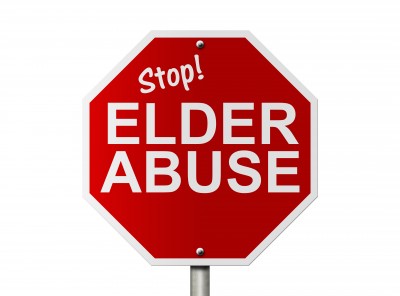A Serious Look at Elder Abuse Prevention

This article aims to delve into the importance of adopting strategies for preventing elder abuse.
Throughout my 32-year tenure in leadership roles within nursing homes, I consistently encountered frustration due to the scarcity of resources, both in terms of time and finances, as well as the absence of thoroughly researched and effective strategies for proactively preventing elder abuse. Despite implementing standard measures such as employee background checks, mandatory annual in-service training, and policy review during new hire orientations, I often sensed a lingering feeling that there was more we could do. Looking back, I now recognize that we also fell short in adequately educating family members on abuse prevention. However, one aspect where we excelled was in promptly reporting allegations, which appeared to hold utmost importance from a regulatory standpoint, regrettably so.
Whether a professional working with elders living in the community or congregate care, does your agency do enough? Can you identify and describe the organizational strategy to prevent abuse?
The Depth of the Problem
Elder abuse/maltreatment, in all its forms, is a systemic problem for vulnerable elders living in the community and congregate care. As the population continues to age, the magnitude of the problem will only increase.
Research by Yon et al., 2017 highlights that one in six older adults experience some form of elder maltreatment, but this statistic may be underestimated due to under-reporting. It is concerning to note that studies indicate varying prevalence rates of abuse, with some suggesting higher rates among elders living in the community and others pointing towards higher rates within care facilities.
Risk Factors of Elder Maltreatment
An elder is at higher risk for victimization under one or more of these conditions:
- Female
- Socioeconomic status
- Poor physical health
- Functional disabilities
- Cognitive impairment
- Mental illness
- Dependence on others for care
- Limited social support
- Social isolation
- Prior exposure to traumatic events
Risk Factors for Perpetrating Elder Maltreatment
- Family history of violence
- Caregiver stress
- Poor mental and physical health
- Substance abuse
- Low social support
- Limited caregiver training
- Emotional or financial dependence on the elder
- History of problems with law enforcement
Source: The Context of Elder Maltreatment: An Opportunity for Prevention Science
Prevention Strategies
Realistically, what can be done? Risk factors may be somewhat out of our control, after all, we don't know the family history of employees or family members related to the presence of abuse, low social support, and even substance abuse.

However, there are many strategies that we can employ. Preventing elder abuse requires a multifaceted approach involving various stakeholders, including individuals, families, communities, healthcare professionals, policymakers, and social service agencies. Here are some strategies to prevent elder abuse:
Raise Awareness: Education and awareness campaigns can help individuals recognize the signs of elder abuse and understand its consequences. This includes training healthcare professionals, social workers, law enforcement personnel, and community members to identify and respond to elder abuse effectively.
Promote Social Support: Isolation and loneliness are risk factors for elder abuse. Encouraging social connections and support networks for older adults can reduce their vulnerability to abuse. Community programs, support groups, and senior centers provide opportunities for social interaction and engagement.
Strengthen Caregiver Support: Caregivers, including family members and professional caregivers, may experience stress and burnout, increasing the risk of elder abuse. Providing caregivers with respite care, training, counseling, and support services can help prevent abuse and improve the quality of care for older adults.
Empower Older Adults: Empowering older adults to assert their rights and advocate for themselves can help prevent abuse. This includes providing information about elder rights, legal protections, and resources available to them. Encouraging older adults to maintain autonomy and independence also reduces their vulnerability to abuse.
Improve Screening and Assessment: Healthcare professionals, social workers, and other professionals who interact with older adults should be trained to recognize signs of abuse and conduct thorough assessments. Screening tools and protocols can help identify abuse cases early and intervene effectively.
Create Supportive Environments: Communities can implement policies and programs that promote age-friendly environments, where older adults feel safe, respected, and included. This may involve improving accessibility, transportation, housing, and social services for older residents.
Collaborate and Coordinate Efforts: Preventing elder abuse requires collaboration among various sectors, including healthcare, social services, law enforcement, legal, and advocacy organizations. Coordinating efforts, sharing information, and collaborating on prevention strategies can enhance effectiveness and reach.With collaboration, aging services organizations at all points in the continuum have the opportunity to build a robust community-focused strategy for preventing elder abuse. Consider this a call to action to take the next step- big or small.
AGE-u-cate invites you to download a free resource guide,
How to Build a Compassion Culture Within Your Organization
By implementing these strategies and fostering a culture of respect, support, and protection for older adults, communities can work together to prevent elder abuse and promote the well-being and dignity of older individuals.




